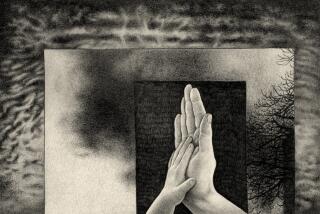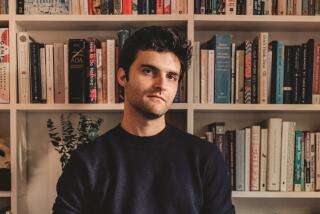For Chronic Sufferers, a Circle of Understanding
VENTURA â The woman has back pain. Not the transient twinge, not the usual Monday-after-a-Sunday-of-gardening back pain. The pain just lives in her and increases through the day, so that by the end of the day she is unable to cook dinner for her family. Itâs been this way, every day, for more than a year.
Her doctor prescribed medication. It didnât work.
After a year of trying to break through the pain with drugs, the doctor looked at her and said, âWell, I guess thatâs it.â
âWhatâs âitâ?â the woman recalls asking him.
âIt seems that this is the way it will be for you,â he said.
Not exactly.
Pain sufferers have been told a few too many times that their pain is their life, that their only choice is to buck up, live with it, get on with things.
Thatâs easy to say if youâre not in pain.
The woman in question is seated in a quiet, carpeted room at the First United Methodist Church near downtown here, in a support group for chronic pain sufferers. She is joined by other of painâs pilgrims, people whose lives testify to poet Emily Dickinsonâs luminous etching:
Pain--has an Element of Blank--
It cannot recollect
When it begun--or if there were
A time when it was not
Actually, these people can recall pieces of their lives when pain was not a roommate.
Across from the woman with the back pain is another woman who says, among other things, that at age 74 sheâs not accustomed to the pain that has made her in recent years give up the limelight as a former pianist and entertainer and nexus of community activity. She says that she has âcrawled into a shellâ as a result, leaving her alone with a pair of bad knees, neuropathy of the toes with an attendant loss of balance, diabetes and diverticula that compromise digestion.
As these conditions are certainly no recipe for a party, the woman tells her mates: âIâm determined to live till Iâm 120, but thatâll be a long time to suffer. How do I learn to accept where I am today?â
A group such as this offers no orthopedic, neurological or gastrointestinal balms. Instead this meeting is convened so that the woman can safely ask her question, learn that others in attendance have asked the same simple question, and then talk about the role of examining oneâs own feelings and life habits as they relate to pain.
Another of the attendees is instructive on the point.
âIâve had back pain for a long time, and my back pain comes in these flare-ups that seem associated with hurt feelings,â she says. âI fear being embarrassed and humiliated, and so Iâve protected myself from people in such a way that I am isolated. Iâve decided that a lot of my physical pain has to do with my emotional isolation.â
What she has done in recent weeks, she says, is attempt to deal with her mother and father and others more spontaneously, reacting to them in real time, and making her feelings known. To her surprise and delight, she reports that ânobody seems to be running to the hills screaming.â To her eternal gratitude, her back pain seems more under control, more predictably episodic.
*
Not all pain, of course, can be fenced off by a frank appraisal of oneâs emotional evolution and state.
No one at this meeting would say so: Not the woman who finds herself unable to cook at the end of the day, not the woman who got a second ulcer and takes eight different medications daily, not the recovering alcoholic with Kroneâs disease who for years took 40 Tylenol tablets a day to blunt crippling headaches that continue to stalk her.
But pain--chronic pain, as distinct from acute just-fell-off-the-ladder pain--is emerging as a field that is defined by research in pharmacology and clinical psychology as well as neurology, according to the Public Health Service of the National Institutes of Health.
Enter the support group, such as this one assembled by a former dance instructor whose chronic pain arises from permanent injury in an accident. The fellowâs pain, not incidentally, is part of the dynamic of the support group; that is, heâs a participant, an equal partner with others who have come to discuss their trials, ensuring that at no point do discussions veer into group therapy.
Call it an open council in which everyone gets his or her five uninterrupted minutes to name their life, name the feelings that arise from their chronic pain. Like pain itself--a protean dark cloud that can, for no apparent reason, sometime open up to bright blue sky--such testimony carries with it ineffable mystery.
People feel less alone. Less depressed. Less angry.
Their pain itself may not go away. But that doesnât mean they wonât feel better.
(BEGIN TEXT OF INFOBOX / INFOGRAPHIC)
DETAILS
* FYI: The Chronic Pain Support Group meets twice monthly. For information, call 643-7760.
More to Read
Sign up for Essential California
The most important California stories and recommendations in your inbox every morning.
You may occasionally receive promotional content from the Los Angeles Times.









